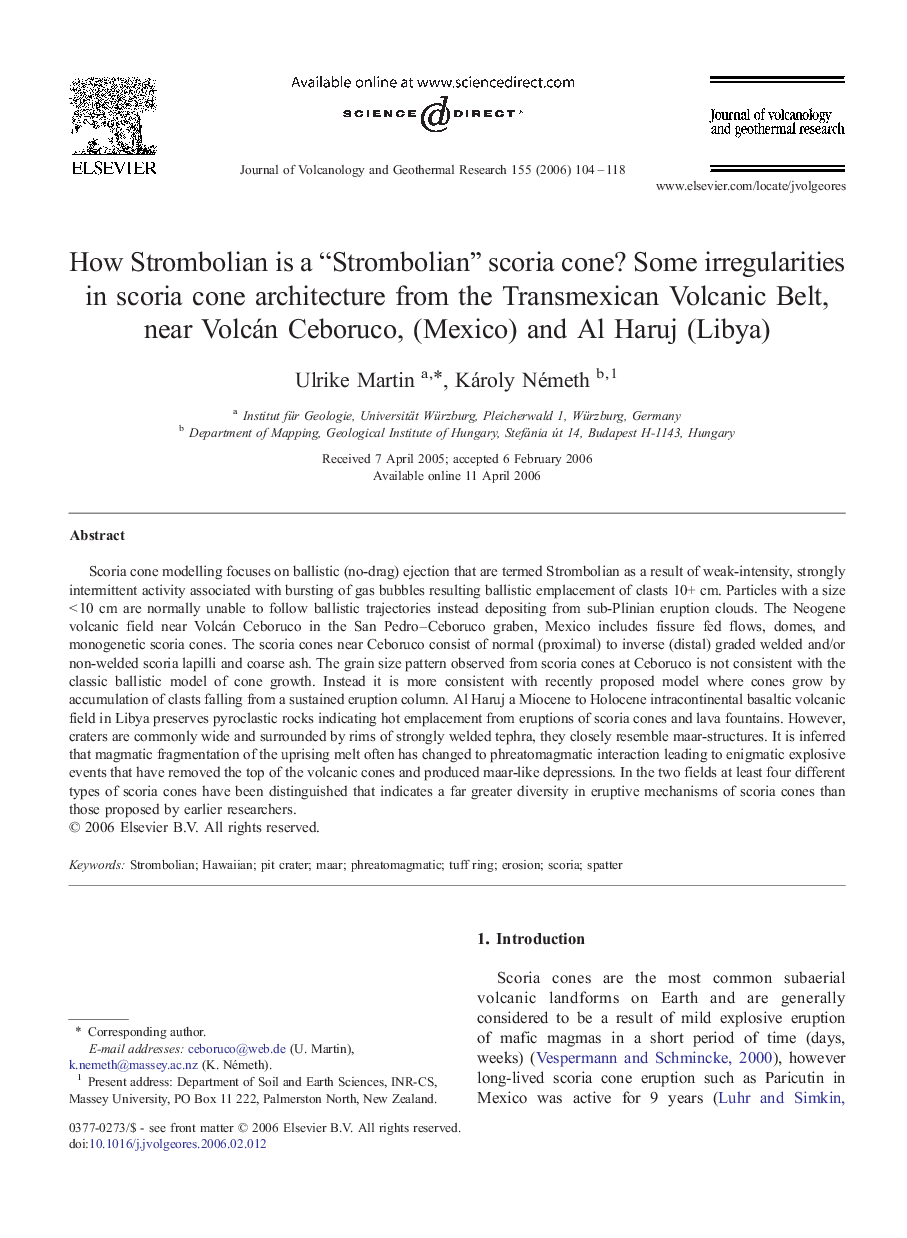| Article ID | Journal | Published Year | Pages | File Type |
|---|---|---|---|---|
| 4714188 | Journal of Volcanology and Geothermal Research | 2006 | 15 Pages |
Scoria cone modelling focuses on ballistic (no-drag) ejection that are termed Strombolian as a result of weak-intensity, strongly intermittent activity associated with bursting of gas bubbles resulting ballistic emplacement of clasts 10+ cm. Particles with a size < 10 cm are normally unable to follow ballistic trajectories instead depositing from sub-Plinian eruption clouds. The Neogene volcanic field near Volcán Ceboruco in the San Pedro–Ceboruco graben, Mexico includes fissure fed flows, domes, and monogenetic scoria cones. The scoria cones near Ceboruco consist of normal (proximal) to inverse (distal) graded welded and/or non-welded scoria lapilli and coarse ash. The grain size pattern observed from scoria cones at Ceboruco is not consistent with the classic ballistic model of cone growth. Instead it is more consistent with recently proposed model where cones grow by accumulation of clasts falling from a sustained eruption column. Al Haruj a Miocene to Holocene intracontinental basaltic volcanic field in Libya preserves pyroclastic rocks indicating hot emplacement from eruptions of scoria cones and lava fountains. However, craters are commonly wide and surrounded by rims of strongly welded tephra, they closely resemble maar-structures. It is inferred that magmatic fragmentation of the uprising melt often has changed to phreatomagmatic interaction leading to enigmatic explosive events that have removed the top of the volcanic cones and produced maar-like depressions. In the two fields at least four different types of scoria cones have been distinguished that indicates a far greater diversity in eruptive mechanisms of scoria cones than those proposed by earlier researchers.
